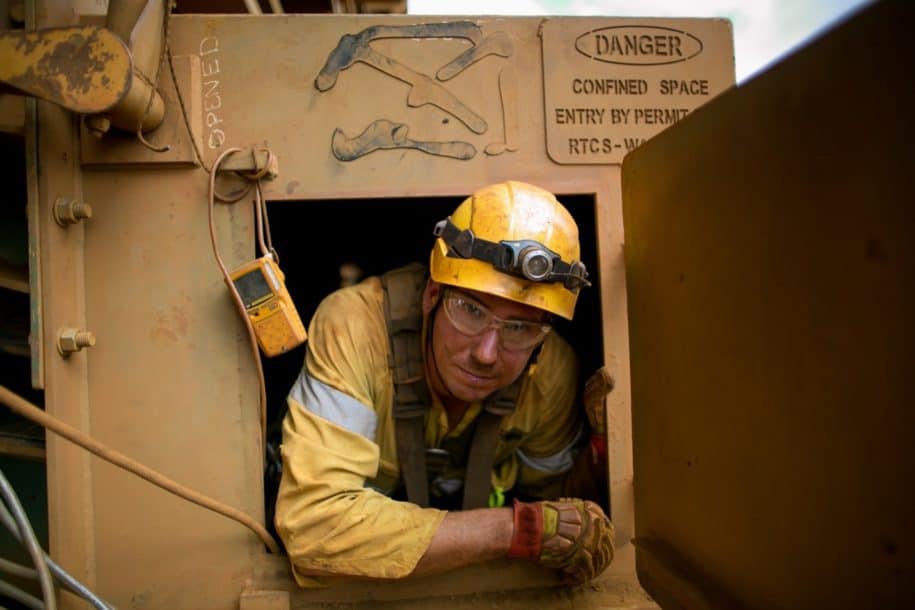Confined spaces represent a wide array of potentially hazardous environments that workers may encounter as part of their daily job duties. Most of these situations can be deemed safe for work if all the appropriate steps are carried out to mitigate the related risks. In many cases, workers and supervisors are required to develop detailed permits for work in these spaces that include a variety of critical details (as stipulated by OSHA regulations). Robust, cloud-based permit authorization software can make these efforts not only more efficient but can capture precise details and allow for seamless communication between all parties for the duration of the confined space operation.
What is a Confined Space?
OSHA defines a confined space as possessing each of the following three traits:
- The space is large enough for workers to physically enter and perform their assigned tasks.
- There are a limited number (or restricted) modes to enter and exit the space.
- The space is not conducive for continuous employee occupancy.
Not all confined spaces pose serious hazards and consequently may not require a permit for work to be carried out within them. Understanding what specifications will lead to work within a confined space requiring a permit is the next step.
When Does a Confined Space Require a Permit?
The fully detailed requirements can be found by reviewing the OSHA standard for confined spaces. Per the standard, any confined space that meets one or more of the following criteria requires a permit before work can commence:
- The space contains or has the potential to contain a hazardous atmosphere (e.g., dangerous gases).
- The space contains a material that has the potential for engulfing the worker(s) (e.g., collapsing soil or flooding).
- The space has an internal configuration that could trap workers present.
- The space contains any other recognized serious health or safety hazard (e.g., rotating machinery).
If a permit-required space exists and employees will need to enter this space, the employer is required to develop and implement a written permit space program that complies with the OSHA standard. The program must include both a hazard analysis component and a permitting plan for each permitted space. With all of this in mind, let’s look at how cloud-based permitting software can help you meet these critical requirements.
The Power of Cloud-Based Permit Authorization Software
Cloud-based permit authorization software solutions, such as those offered by SafetyStratus, help companies meet every OSHA confined space requirement in the most comprehensive and efficient way. The process begins with accessing electronic forms (e-forms) that can be customized and configured to capture every crucial piece of data, including (but by no means limited to)
- A complete description of the confined space.
- A report of the work that will performed.
- The estimated start date/time and end date/time of the planned work.
- A comprehension designation of each hazard type that may exist (styled in dropdown or checkbox form).
- The identification of necessary equipment or special mitigation measures.
- A list of hazards present, such as atmospheric conditions, moving equipment, etc.
- The contact information for each worker and supervisor associated with the work.
The permit application form is then submitted, and the supervisor(s) are notified to review it for approval. Supervisors or reviewers communicate with the applicant to ask questions or make any important changes to the details of the permit before approval is granted. Once approved, an expiration date will be applied to the permit. If, however, the work needs to carry on past the expiration date, the team would submit a renewal request to their supervisor/reviewers. Similarly, if the nature of the work changes (for any reason) the team would submit an amendment request so that the supervisors could confirm that all necessary safety adjustments are in place before work continues. All these reviews and approvals must be communicated in an organized, timely fashion. Implementing a cloud-based permit authorization software allows for all these communications (notifications, new applications, pending changes, and renewals) to happen in a secure, centralized location. There are no buried emails or incompatible document types to tie up the process.
Another very helpful aspect of using cloud-based permit authorizations software for confined space permitting is the ability to easily capture any ongoing safety monitoring data that is gathered during the work. An example of this is testing and recording atmospheric data before, during, and after work takes place. In this case, custom sub-forms would be created, to be left open and accessible to safety monitors for data recording. This ability ensures that all data utilized and generated in the work in this permit-accessible confined space is maintained in one, fully integrated system. Workers, supervisors, and administrators will have secure, instantaneous access to the data required for safely performing their work.
Confined space permitting is one of the most crucial safety-related tasks that any employer manages. There are many essential details that cannot be overlooked and must be transparently maintained. Having a quality, cloud-based tool to aid this endeavor not only saves time and effort but (most importantly) ensures that every employee has complete access to the company’s EH&S program and tools while confined space work is taking place.
AUTHOR BIO

Joe comes to the SafetyStratus team with over 15 years of experience in the biological sciences and laboratory management and safety. At the University of Connecticut, and later at the University of the Sciences, Joe managed multiple high-volume biology teaching laboratories. He also worked as an Aquatic Biologist for the Philadelphia Water Department’s Office of Watersheds. Most recently Joe held the position of Laboratory Safety Manager in the University of the Sciences’ Environmental Health & Safety Department, overseeing all aspects of safety inspections and compliance in over 150 campus teaching and research spaces.
Originally from Connecticut, Joe has lived in the Philadelphia suburbs for the last 10 years. He holds a Bachelor of Science degree in Environmental Science and Biology from the University of Maine at Fort Kent. In his free time, Joe enjoys working out, taking in a good football game or movie, and traveling with his wife to sunny Caribbean destinations whenever possible.



